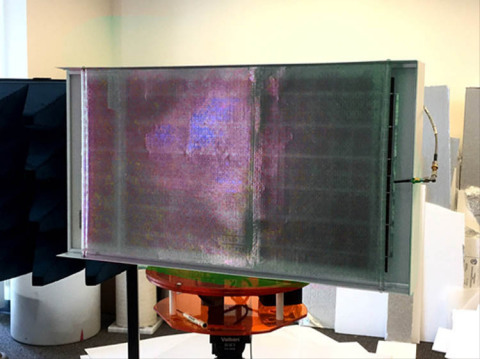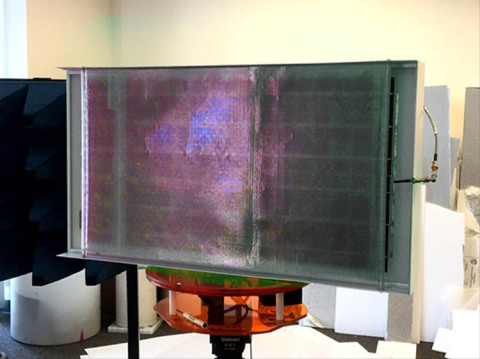BEDFORD, Mass.--(BUSINESS WIRE)--Fractal Antenna Systems, Inc. today announced a US Patent Office Notice of Allowance (NOA) on its latest invention, which marries antennas and energy collectors and promises a more efficient wireless world.
The new invention discloses an “aperture engine”, a sandwich-layer merger of antenna and energy/solar cell collection along with a receiver /transmitter. In an aperture engine, the same area that collects energy also receives and/or transmits it. The aperture collects energy and converts it into new useful form-- radio waves. It is an ‘engine’ built from an aperture.
The idea of an aperture engine has its roots over 20 years ago, when co-inventor Nathan Cohen, an astrophysicist, surmised that extraterrestrial civilizations, in SETI, might capture light from a surface and also use that same surface as an antenna to make cosmic radio transmissions. It would be self-powered. An extraterrestrial civilization could be envisioned using an aperture engine the size of a small field, to transmit across the galaxy.
Out of this world ideas are not inventions, and 10 years ago, Cohen pursued how to make an Earth-bound aperture engine. The need was born with machines required to communicate wirelessly to one another, with no room for separate antennas. Cohen arrived at an enablement of the cosmic idea, using fractal antennas.
In a typical aperture engine, light passes through a fractal-based microwave antenna array, whose reduced element size allows substantial transparency for light to pass through, to energize a lower layer of solar cells. The collected energy may be stored in a battery or directly power the attached receiver or transmitter, which respectively detects or transmits microwaves back through the antenna.
Aperture engines promise to have great impact in a number of areas. Sensors can be bandage-like devices placed on machinery, harvesting energy, and communicating wirelessly for efficient usage, saving energy and cost. Motors and generators can be controlled without wires from across the globe. Space satellites can leverage smaller size by having the slabs of solar cells incorporating thin-layering antennas for communicating back to the ground, saving weight and form factor, and decreasing drag. Surveillance systems can now be self-powered and send monitoring information using a nearly flat, conformal section of a wall, pillar, or other support structure. Many microwave relays can now be unobtrusive, self-powered slabs built into the aesthetic of buildings.
The firm expects to see the first products from the new patent within a year, targeting the Internet of Things (IoT) and smart cities markets, where remote control and sensing have become important.
ABOUT FRACTAL ANTENNA SYSTEMS, INC.
Fractal Antenna Systems, Inc. (www.fractenna.com) supplies products and solutions for the world's most demanding wireless, electromagnetic, and electronic applications. Backed by over five dozen U.S., and international patents, plus dozens of patents pending, FRACTAL is the recognized pioneer in fractal technology, with extensive research and field experience over 23 years in business. The company is a privately held and headquartered in Bedford, Massachusetts, USA.




